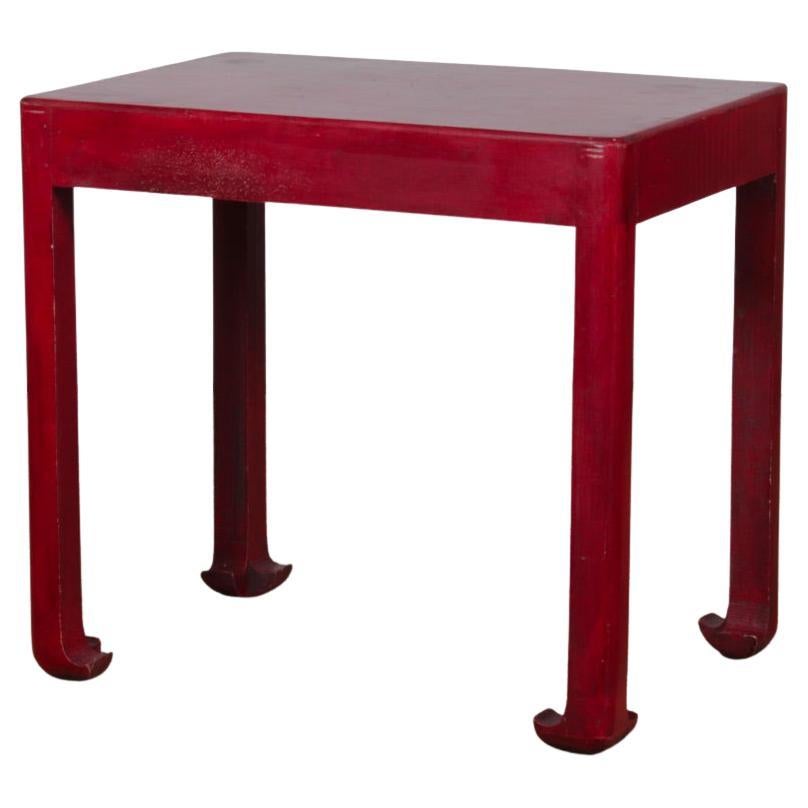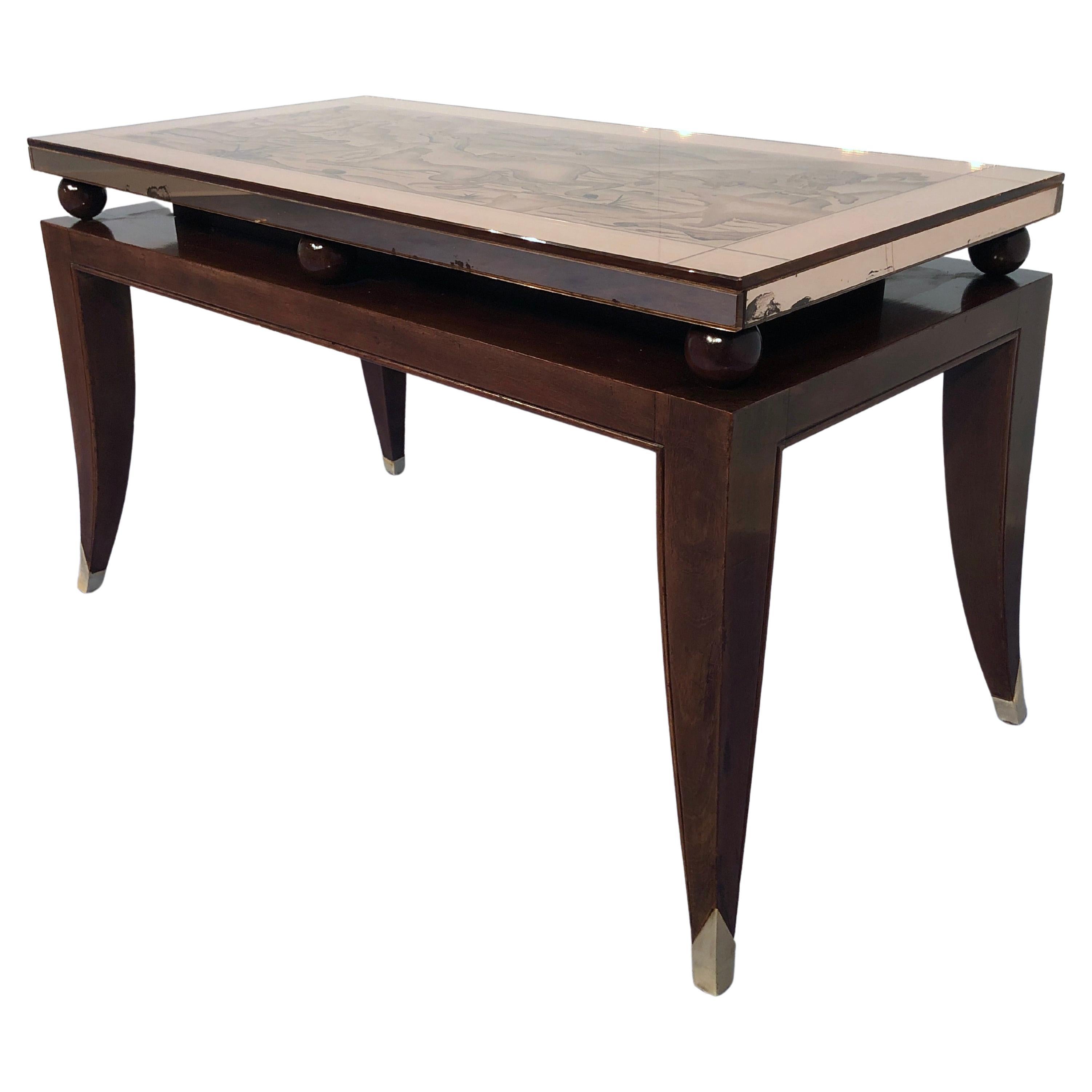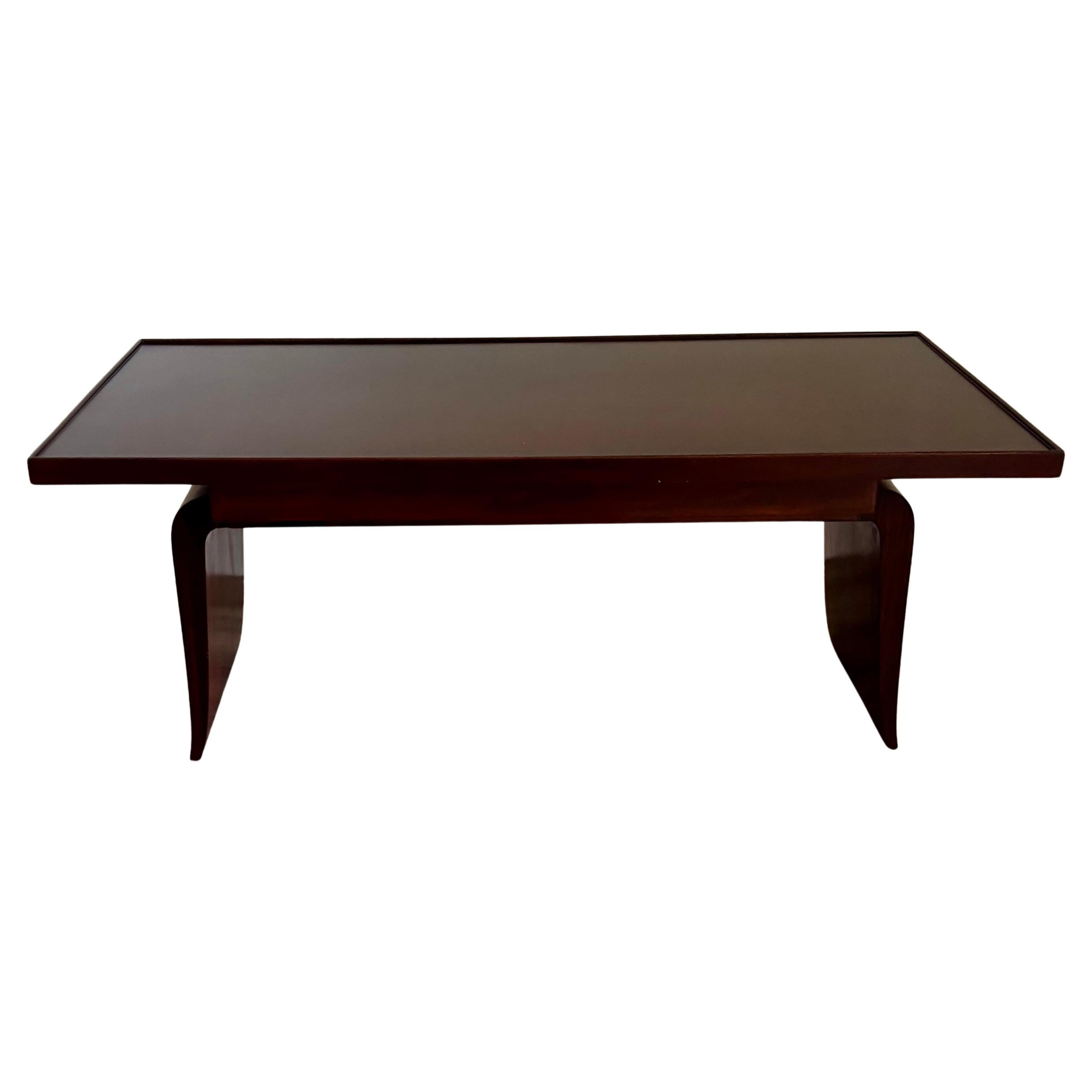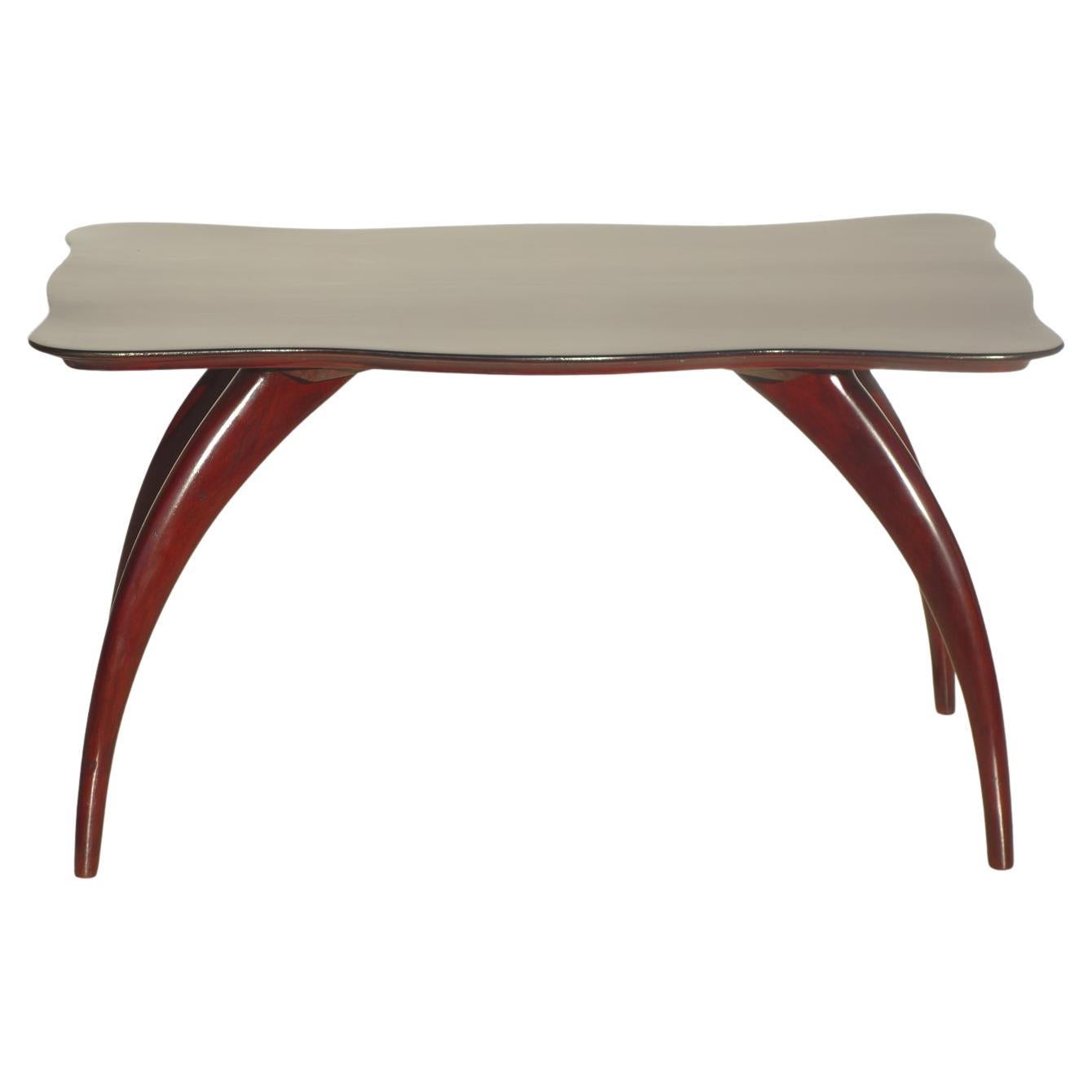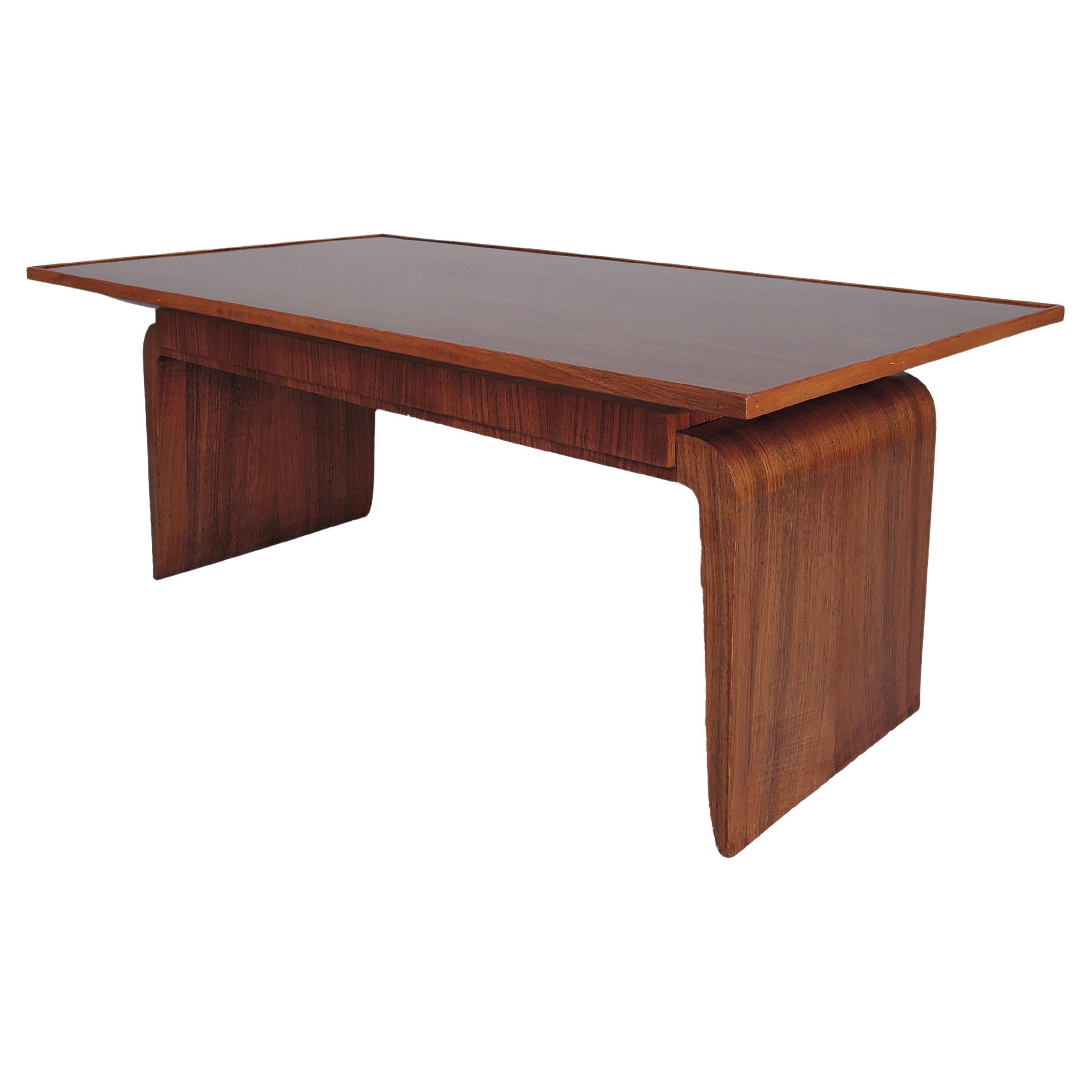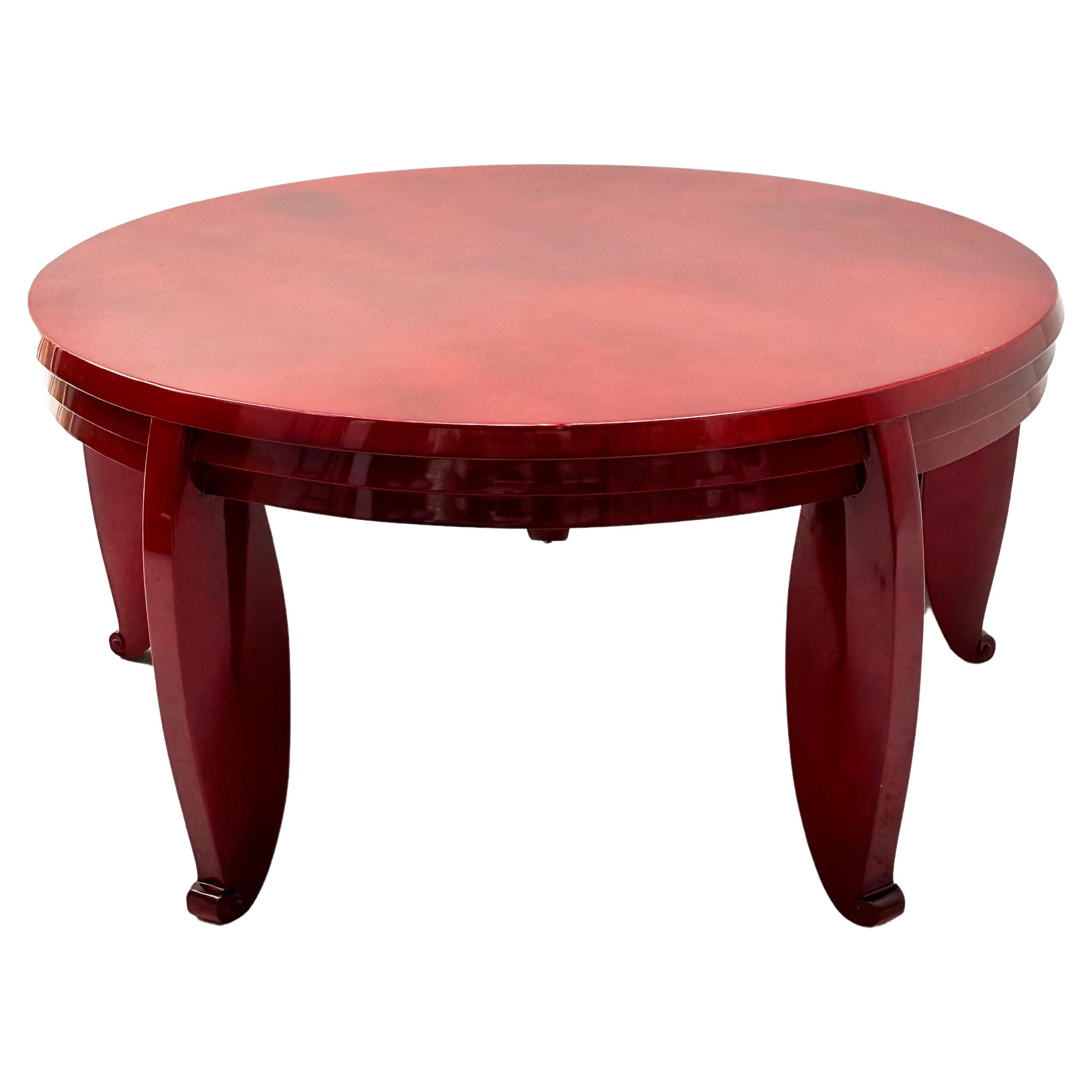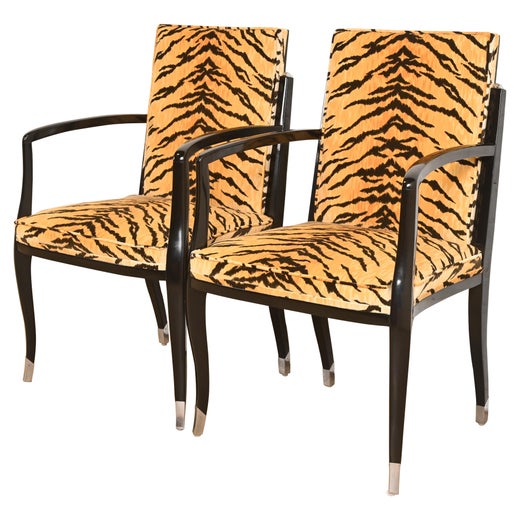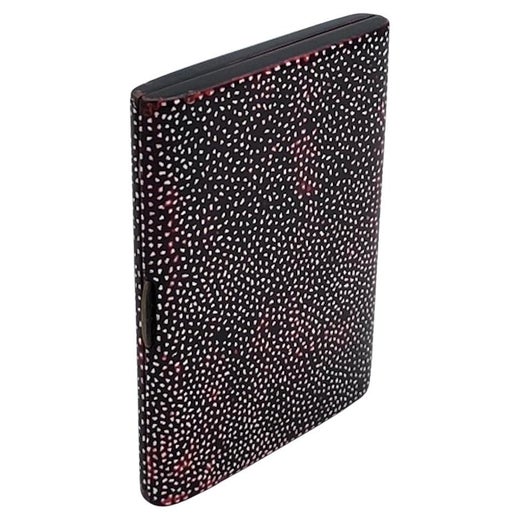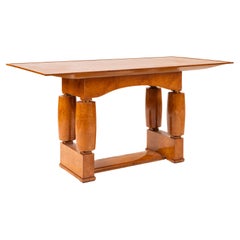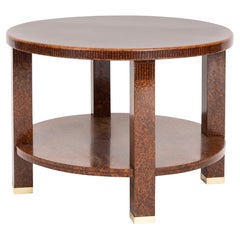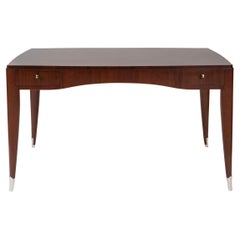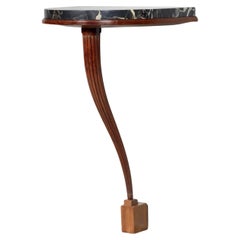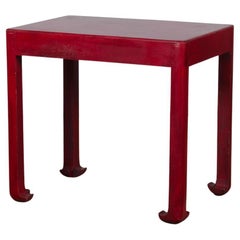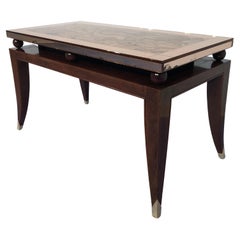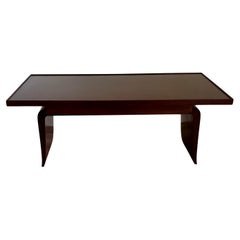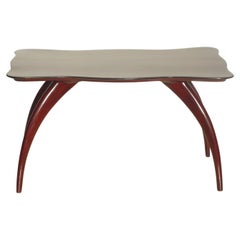Ruhlmann 'Ducharne Volante' Red Lacquered Coffee Table
About the Item
- Creator:Jean Dunand (Painter),Émile-Jacques Ruhlmann (Designer)
- Dimensions:Height: 14.18 in (36 cm)Width: 19.69 in (50 cm)Depth: 15.75 in (40 cm)
- Style:Art Deco (Of the Period)
- Materials and Techniques:
- Place of Origin:
- Period:
- Date of Manufacture:circa 1926
- Condition:
- Seller Location:Berlin, DE
- Reference Number:1stDibs: LU10578246992372
Émile-Jacques Ruhlmann
Endeavoring to create exquisite work that would endure forever, designer Émile-Jacques Ruhlmann defined the grandeur of the French Art Deco movement of the 1920s. His luxurious storage cabinets, seating, other furniture and interiors garnered considerable popularity alongside the growth in post–World War I Paris’s population of newly wealthy residents.
The Paris-born Ruhlmann was the son of a decorating contractor, a business he took over in the early 1900s and expanded into furniture and interior design. But by the end of his career, he was best known for being a skilled ensemblier, a term for a designer who not only makes furniture and decorates spaces but rather personally crafts each and every piece required in the space, from doorknobs to sofas. This practice ensured that the space was harmonious and consistent with Ruhlmann’s vision, and it contributed to the lasting popularity of his designs.
Ruhlmann enjoyed the patronage of the newly affluent and was encouraged by the popularity of Art Deco. While the Arts and Crafts and Art Nouveau movements were early influences, he is renowned for the modernity of his Art Deco–era designs, which reflected the celebratory nature of the times, including an integration of opulent flourishes; luxurious materials like Macassar ebony, amboyna burl, ivory and precious metals; and skilled craftsmanship and construction techniques.
Renowned all over the world, Ruhlmann was commissioned by the Metropolitan Museum of Art in New York to design a cabinet in 1925, embellishing its curved door with a sophisticated floral motif by way of an ornate marriage of wood and ivory veneer. Also in 1925, at the Exposition Internationale des Arts Décoratifs et Industriels Modernes, arguably the exhibition that introduced Art Deco on an international level, his pavilion was the most popular.
By the time the economic depression of the 1930s materialized, Ruhlmann’s exorbitantly expensive designs were no longer viable. But the majesty and elegance of the ’20s remain an important part of design history, and Ruhlmann has been described as “perhaps its finest exponent.”
Find a collection of authentic Émile-Jacques Ruhlmann furniture on 1stDibs.
Jean Dunand
A prolific talent, Jean Dunand was one of the most extraordinary and emblematic designers of the early 20th century. He produced well over a thousand Art Deco works in an almost dizzying array of media. He is best remembered for his exquisite creations in lacquer and metal, but he also worked as a sculptor, mosaicist, portraitist and goldsmith. The Swiss-born Parisian designer imagined jewelry, tapestries, fabrics for haute couture and, during World War I, even a helmet for soldiers with an adjustable visor.
Dunand’s clients included fashion designers Jeanne Lanvin, Madeleine Vionnet and Elsa Schiaparelli, as well as Josephine Baker, who used his vases and screens for her stage sets. She also posed nude for him, and her likeness appears on several lacquer panels. He collaborated with Robert Mallet-Stevens on a boutique for the Swiss leather-goods brand Bally on Paris’s boulevard de la Madeleine, and he lacquered furniture for both Eugène Printz and Émile-Jacques Ruhlmann.
The two highlights of his professional life, however, were no doubt his participation in the International Exhibition of Modern Decorative and Industrial Arts in Paris in 1925 and the decor he imagined for a number of luxury ocean liners, the largest and most prestigious of which was the Normandie, which first set sail in May 1935.
At the 1925 exhibition, from which Art Deco derives its name, Dunand made his mark not only with a series of four monumental hammered-copper vases, decorated with striking geometric patterns in lacquer consisting of squares, triangles, chevrons and undulating lines, but also with the sleek and stylish smoking room he designed for the Pavillon de la Société des Artisans Décorateurs.
Born Jules-John Dunand in 1877 (he Frenchified his first name later) close to Geneva in Switzerland, his first career was as a sculptor. He moved to Paris in 1897 and won a gold medal at the Exposition universelle de 1900 for a bronze proof titled Quo vadis. Five years later, he had turned his attention almost exclusively to the decorative arts. In an ensuing interview, he explained, “The desire to earn a living was partly responsible for my abandoning what is known as ‘fine art.’”
In 1912, Dunand met the Japanese lacquer master Seizo Sugawara, who initiated him into the secrets of the medium’s age-old techniques. It was not until 1921, however, that he presented his first pieces of lacquer furniture. Dunand was not the only Art Deco designer to use the material (Eileen Gray famously did so too), but he employed it much more prolifically and decoratively.
By 1924, he was at the head of a workshop of nearly 60 employees producing objects that ranged from boxes and trays to card tables and screens, many of which bore breathtakingly beautiful motifs consisting of interlocking lines and geometric shapes. By 1927, he had abandoned abstract patterns, favoring instead rich and complex figurative designs, largely featuring animals against stylized backgrounds of leaves and flowers, an aesthetic not far removed from the paintings of Henri Rousseau.
Dunand continued his work relentlessly until his death, in 1942 at the age of 65.
After World War II, Art Deco went completely out of style, and Dunand’s work was largely neglected until the mid-1970s. Since then, it has gained something of a cult following. Karl Lagerfeld, Yves Saint Laurent, Andy Warhol and Marc Jacobs all had Dunand creations in their collections.
Find vintage Jean Dunand decorative objects, ceramics and other Art Deco works on 1stDibs.
- ShippingRetrieving quote...Shipping from: Berlin, Germany
- Return Policy
More From This Seller
View AllVintage 1930s French Art Deco Tables
Bronze
Vintage 1910s French Art Deco Coffee and Cocktail Tables
Bronze
Vintage 1930s French Art Deco Desks and Writing Tables
Bronze
Vintage 1920s French Art Deco Console Tables
Marble
Vintage 1930s French Art Deco Side Tables
Bronze
Vintage 1920s French Art Deco Console Tables
Ebony, Macassar
You May Also Like
Vintage 1920s French Coffee and Cocktail Tables
Wood
Vintage 1940s French Art Deco Coffee and Cocktail Tables
Mirror, Wood
Early 20th Century French Art Deco Coffee and Cocktail Tables
Wood
Vintage 1930s Italian Art Deco Coffee and Cocktail Tables
Wood
Vintage 1930s French Art Deco Coffee and Cocktail Tables
Wood
Vintage 1920s French Art Deco Coffee and Cocktail Tables
Wood
